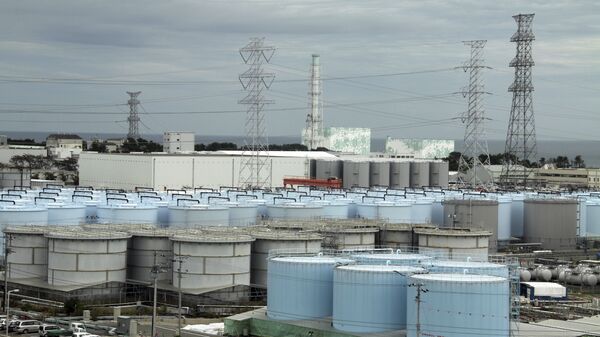The storm caused extensive flooding as hundreds of rivers burst their banks, causing the death toll on Wednesday to rise to 74. The Tamura city government told the Japanese daily paper Asahi Shimbun that 2,667 bags of yard debris collected around the Fukushima site - mostly sticks, grass and leaves - had been swept away by the swollen Furumichi River. Officials later told Japanese TV station NHK that only six of the bags had been found.
Bags of #debris from #Fukushima #disaster swept away in #typhoon:The Asahi Shimbun #radioactive https://t.co/3q5Sy8DiQF
— Asahi Shimbun AJW (@AJWasahi) October 14, 2019
Kevin Kamps, the Radioactive Waste Watchdog at the organization Beyond Nuclear, joined Radio Sputnik’s Loud and Clear Wednesday.
“Typhoons regularly hit Japan kind of like hurricanes hit the United States all too often,” he said, noting “there have been instances like this in the past.”
“It looks like some of these bags got washed out to sea. And of course, the authorities say, ‘Oh, it’s no big deal, even if the bags break open, it’s no big deal.’ So it begs the question: so why did you gather that stuff up in the first place, if it’s no big deal?’ This is radioactively contaminated material. It’s unfortunate, but it’s kind of a lingering after-impact of the catastrophe.”
Reports about the extent of the damage are unclear as to whether nearby water has been irradiated by the debris or whether the highly radioactive wastewater stored at the facility has been leaked as a result of the storm.
“There’s all of these shoes that can drop at the Fukushima Daiichi site, and here we are, going on, what is it, nine years after the catastrophe began? But that’s the nature of nuclear power catastrophes: they have a start date, they don’t have an end date, and there’s so many things that can go wrong in a very big way at any given time.”
Kamps noted the position of both the Tokyo Electric Power Company (TEPCO) as well as the national government in Tokyo was that dumping that highly radioactive wastewater into the ocean was also part of their proposed solution to the problem of its continued accumulation. The site is expected to hit maximum capacity in 2022, and the by-then 1.37 million tons of rainwater and groundwater, made radioactive by exposure to the plant’s melted-down nuclear reactors, will need to be either disposed of or treated to be made safer.
Handling the issue is a delicate process for Tokyo, which has faced stern protests from several regional countries and which has a reputation to protect ahead of the 2020 Summer Olympics it will host next July.
While the water contains many toxic substances, according to Kamps, one of the most dangerous is tritium, a radioactive form of hydrogen that can’t simply be eliminated by filtration or some other mechanism. Many nuclear plants don’t bother to remove tritium from the water when processing it, as they argue it’s plentiful enough in nature as to not cause major problems.
“I think the Japanese government’s been caught off-guard” by protests coming from Seoul about the plan to dump the wastewater “because, truth be told, South Korea is also a nuclear power country; they have a couple dozen reactors in their country. Usually these countries with nuclear power behave more like a cabal, they cover for each other,” Kamps told Sputnik. “So here’s one of the ‘club members’ starting to ask questions that you’re not supposed to ask; you’re supposed to help each other keep these secrets.”
“It may be a reflection of the Moon [Jae In] administration in South Korea, a relatively progressive government, and its own feet [are] being held to the fire by groups like the Korean Federation of Environmental Movements, which is a strong anti-nuclear power group in a very pro-nuclear country, unfortunately, kind of like we feel like, here in the United States,” Kamps told host Brian Becker, “fighting the fight against just incredible odds.”
A similar situation exists at the San Onofre Nuclear Generating Station outside of San Diego, California, a closed plant where the nuclear waste is stored “a hundred feet from the Pacific Ocean,” Kamps said, noting that at current sea levels, it’s just inches above high tide, and that with rising seas due to climate change, the sea will soon swallow the site where the spent nuclear fuel sits.
However, in southern California, environmental groups are mostly pushing to relocate the waste to poorer communities, including Native American lands further inland. Instead, Kamps said the waste should be relocated to higher ground just a few miles inland, but still on the massive Camp Pendleton Marine Corps base where the plant presently sits.
“We’re going to have to make some decisions in this country about dealing with these high risks and doing what needs to be done, or we’re going to pay some very high consequences at some point,” Kamps said.

